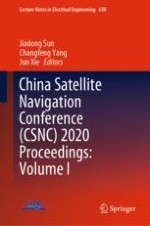2020 | OriginalPaper | Buchkapitel
Research on Enhancement Scheme of GPS Occultation Open-Loop Tracking Strategy
verfasst von : Lu Zhang, Xiaojiang Yang, Qijia Dong, Juanjuan Dong, GenJin, Xianyang Liu, YanCheng, Lijing Pan
Erschienen in: China Satellite Navigation Conference (CSNC) 2020 Proceedings: Volume I
Verlag: Springer Singapore
Aktivieren Sie unsere intelligente Suche, um passende Fachinhalte oder Patente zu finden.
Wählen Sie Textabschnitte aus um mit Künstlicher Intelligenz passenden Patente zu finden. powered by
Markieren Sie Textabschnitte, um KI-gestützt weitere passende Inhalte zu finden. powered by
